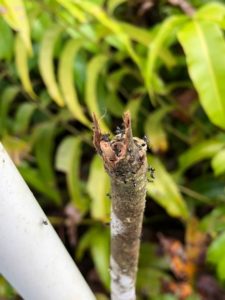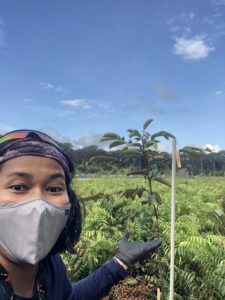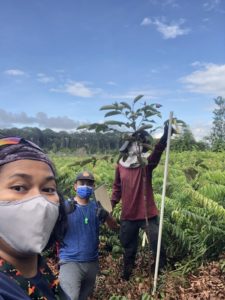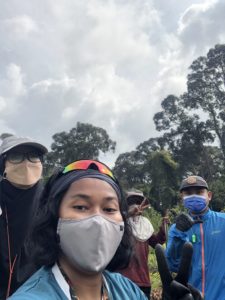It has been an eventful year since the launching of the Badas Tree Planting 2021. Two hundred Shorea albida or commonly known as Alan saplings were planted on the degraded peat swamp forest of Badas. Shorea albida is a native and dominant species of the Badas peat swamp forest but the numbers have dwindled down when pipelines and roads were constructed across the peat swamp forest. Badas peat swamp forest is shaped like a dome and when the construction of the pipelines and roads cut through the peat dome, the water that was stored in the sponge-like peat for hundreds of years has been draining out continuously since then. A peat swamp forest is rich in carbon when it is in its pristine and wet state. However, it will lose its carbon-storing property if it is drained and this will result in the release of carbon into the atmosphere that is responsible for global warming. Other than that, a dry peat forest can trigger forest fires during long drought events that can last many days and even weeks!
Monitoring and census were carried out after one, three, six, and twelve months of planting. Weeding and fertilizer applications were experimented on the Shorea albida saplings but it turns out that both treatments do not improve their growth and survivorship as compared to the ones without these treatments. That is good news as it shows that peat swamp rehabilitation using Shorea albida can be cost- and labour-effective. Can you imagine the hard work to remove the vegetations and apply fertilizers to the 200 saplings on a deforested peat swamp with no tree cover to provide shade from the scorching sun?
It is always interesting to see the state of the saplings during the monitoring periods. Some may appear dead during the past census but new shoots may start to grow during the next census. Occasionally, ants were seen making a nest in the stem and there was even a nest made by a Malayan Pied Fantail on the forked branches of the sapling!
As expected, not all the saplings managed to survive the harsh condition of the peat swamp forest so the survivorship may not be great after one year. It could possibly be due to the genetic qualities of the saplings and the microclimate of the sapling plot. Hence, any forest rehabilitation programme is no easy feat and it is a long-term recurring effort to see the fruits of the labour. It is recommended to replace the dead saplings every few months. However, the team agrees that the saplings that survive the peat swamp forest after one year are doing very well with healthy shoots of new branches and leaves.
Despite challenges during the pandemic, the UBD-SMART team had succeeded to complete the one year peat swamp forest rehabilitation program. It is definitely tough to conduct the monitoring and census activities when the state of the COVID-19 pandemic in Brunei Darussalam is very unpredictable so kudos to the team for persisting and making it happen!
Fret not, the Badas Tree Planting 2021 monitoring activities will be extended for another year! Hopefully, volunteers will be able to participate in the next post-planting activities that are planned to happen every six months. Until then, stay safe and the team hopes to see you on the next post-planting activities!






